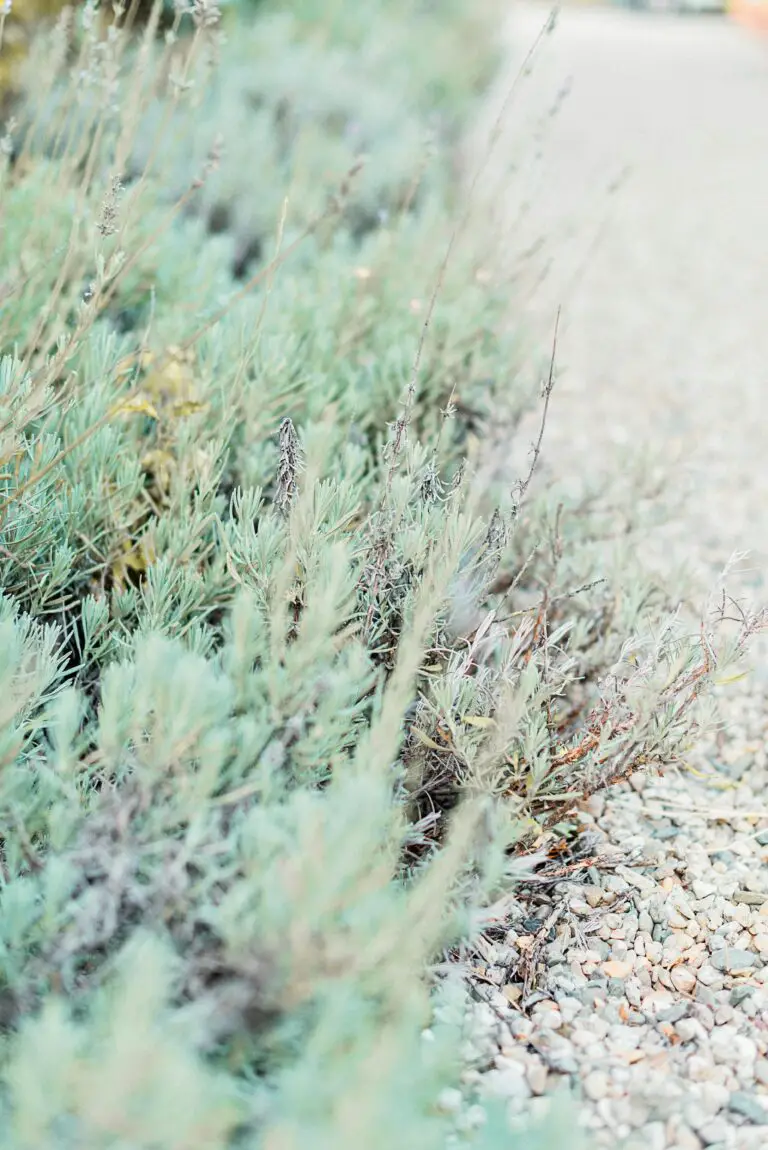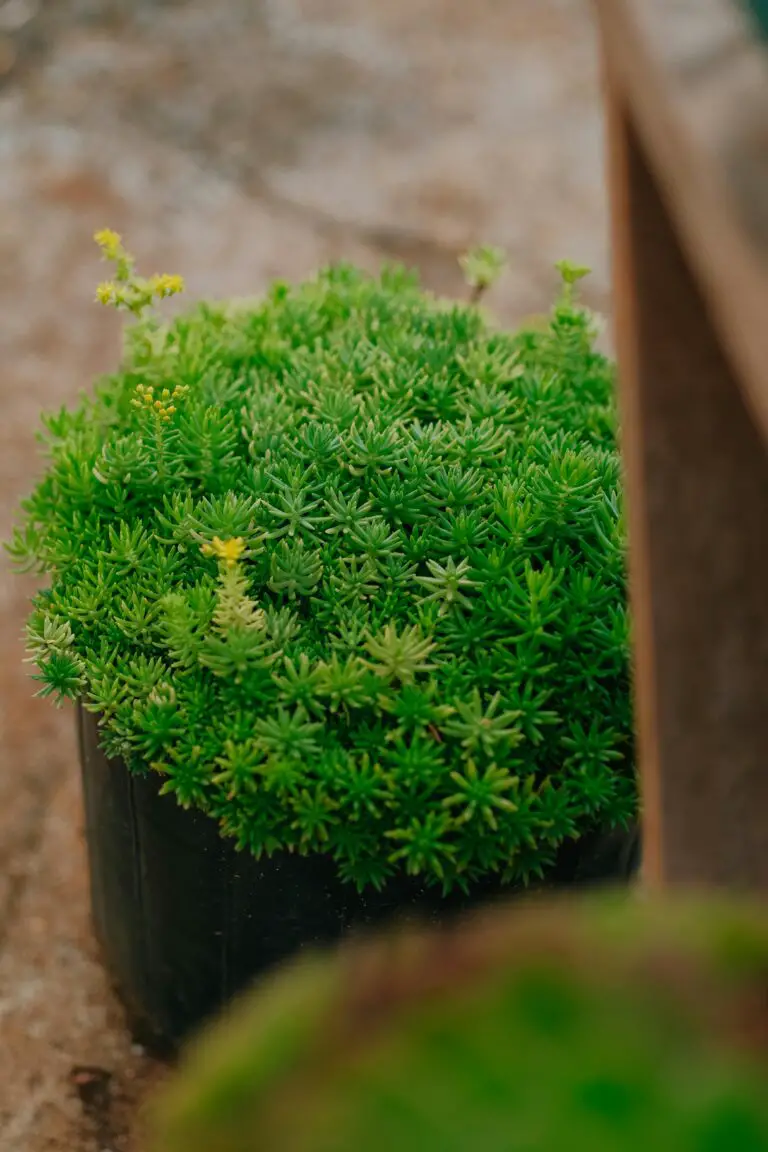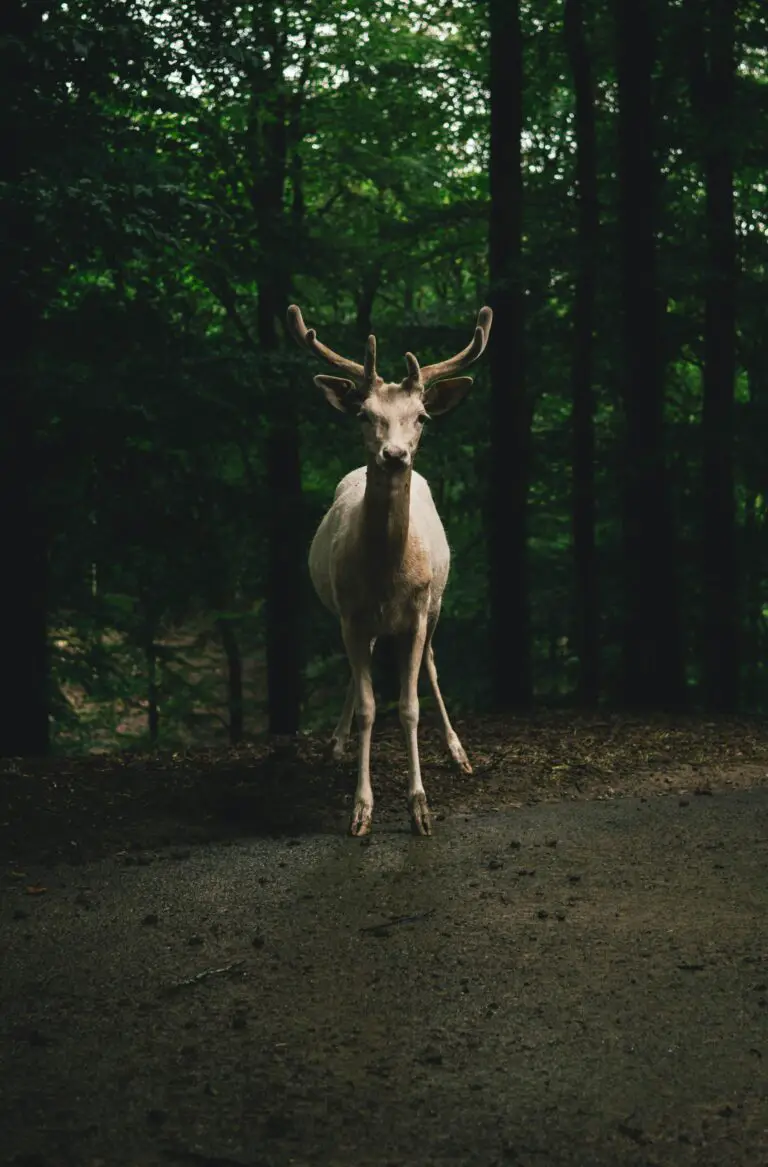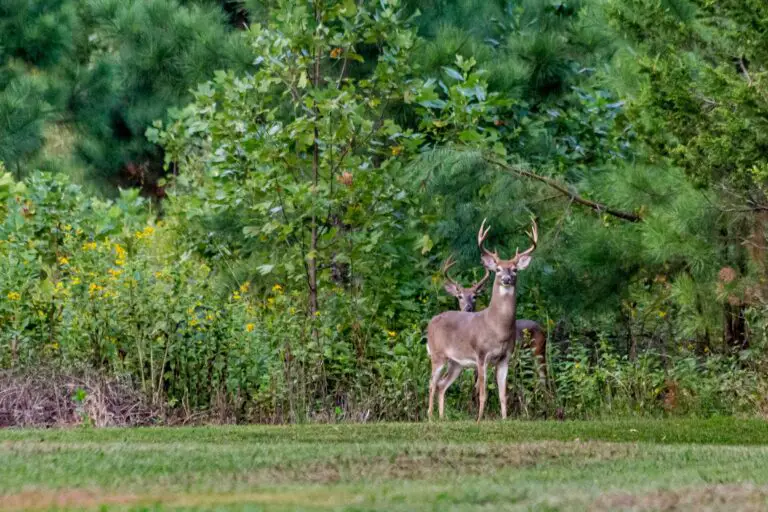Introduction to Deer-Resistant Sedum
Welcome to a gardener’s anecdote where flowers bow in respect to the tenacious stonecrop. Sedum, the hardy hero of green tapestries, has become the go-to comrade for those besieged by deer turning prized petunias into a midnight feast. Why? Because these succulent wonders hold their ground with remarkable defiance. So, let’s wander through the wonders of the sedum landscape to understand how this plant family remains scarcely nibbled—transforming gardens into serene yet vibrant retreats that deer prefer to admire from afar.
Lend me your garden dreams for a moment and imagine a throng of Sedums, painting your terrains with splashes of color while deer look on, almost appalled at their stubborn resilience. Sedum boasts a suite of traits that make it a standout in the deer-resistant category. Picture this: textured leaves that bristle at the appetite of wandering wildlife, and a spicy, peppery flavor profile that escorts deer promptly away from your garden gates.
The benefits of embracing Sedum in your green sanctuary are not just about repelling deer. As an adaptable and low-maintenance gem, it also weaves in strands of ecological support by inviting a symphony of pollinators to dance amidst its blooms. Moreover, sedums laugh in the face of drought, requiring little water to sustain their plump foliage and starry flowers. Truly, a gardener’s ally in achieving that delicate balance of beauty, function, and sustainability.
Now, let’s not just trumpet the attributes of Sedums from a botanical balcony. There are real-life sagas of green-thumbed warriors who have sculpted their soil into a fortress of Sedum varieties, ranging from the bold ‘Autumn Joy’ to the sprightly ‘Dragon’s Blood’, each with its own unique charm. These tales are not just about plants surviving but thriving, creating landscapes so captivating that even the most persistent deer are deterred by the innate resistance of these botanical battlers.

So, as we salute these formidable Sedum varieties and their steadfast stance against unwanted herbivores, let us remember that in the world of gardening, some battles may be lost, but with the right flora armor, the war can indeed be won. Stonecrop, in all its resilient glory, is your champion in the enduring quest for a deer-resistant Eden. Join us in the next sections as we delve deeper into the verdant world of Sedum and crown the varieties that stand tallest on the deer defense leaderboard!
Understanding Deer Browsing Habits
For those of us who pour love and labor into our gardens, the sight of deer can evoke feelings of awe and a hint of impending doom. Sure, they’re enchanting, but our leafy friends might disagree—especially if they’re part of the menu! To combat this, it’s critical to understand the fine dining preferences of our antlered acquaintances. So, let’s cut to the chase or, rather, help our gardens give the chase with a certain star of the succulent world: Sedum.
First off, why are some plants like the Sedum variety less likely to receive a nibble? It comes down to deer’s taste buds. They have a penchant for lush and tender greens, full of moisture and easy to digest. Nonetheless, Sedum, our hardy hero, snubs this trend with its thick, fleshy leaves that are often coated with a sassy layer of farina—the plant equivalent of a “keep off” sign. It seems that bitterness and a robust texture are the garden’s best defense in this game of munch!
Take a stroll down any deer trodden path, and you’ll notice that plants with aromatic foliage, such as our esteemed Sedum, tend to be left in peace. It’s almost as if these savvy succulents have cracked a secret code, emitting a fragrance that gently whispers “pass on by” to those roving ruminants. Yup, the power of scent in Sedum might just be as potent as those perfumes we spray to keep admirers—or unwanted admirers—at bay!
Real-life examples of this can be found in gardens that serve as accidental buffets. Remember your neighbor’s prize roses? Devoured! The lettuce bed by the patio? Sheared to the nubs! But that rocky patch where Sedums stand guard? Untouched. It’s like these succulents have put up an invisible fence, marked “Do Not Disturb” in deer dialect.
But how does one ensure their garden becomes a no-grazing zone without multiple green thumbs? Simple—choose the right warriors. Those seeking a serene sanctuary should head over to our guide on cultivating a Sedum sanctum that deters even the most tenacious of critters.

Armed with this insight into deer feeding habits, you now stand a better chance of safeguarding your green haven. And as you weave through the jungle of advice on deer-resistant gardening, remember Sedum is your shield in the lush battle. With their distinctive qualities, these succulents don’t just survive in your garden; they ensure your garden survives.
The Hallmarks of Deer-Resistant Sedum Varieties
Picture this: a serene garden, awash with a variety of sedums, luxuriating in the sun without the nibble marks of pesky deer. But why do these particular succulents often go unchewed? The answer lies in their unique characteristics that make them less snacks and more statuesque showpieces in the eyes (and noses) of our four-legged frenemies.
Thick, Succulent Leaves: A Deer’s Dilemma
One of the paramount features that shield sedums from the deer’s dietary list is their thick, succulent leaves. These juicy jewels are not only a visual treat but also a tactical fortification. Deer tend to pass on plants with leaves that are harder to digest and lack the tender crunch they favor. Instead, sedums flaunt their fleshy foliage like a botanical armor, effectively telling deer to “chew on this thought instead.”
Aromatic Compounds: The Invisible Shield
In the wild and wonderful world of sedums, you’ll find a range of enchanting aromas that gardeners adore and deer detest. The sedums’ secret weapons are their aromatic compounds that act as olfactory alarms to those garden grazers. Much like how humans may turn away from a pungent perfume, deer wrinkle their noses when they get a whiff of these potent plants. This bouquet of scents isn’t just a byproduct of nature’s whimsy; it’s a strategic move on the part of the plant to keep nibblers at bay.
To witness the wonders of sedum’s deer resistance, take a look at this illuminating video. It explores some perfect plants that not only thrive in challenging growing conditions but also maintain their stand against deer:
Our green-thumbed neighbors might share stories of deer decimating delphiniums or treating tulips like a tasting menu. Yet, amidst these tales of horticultural heartache, you’ll hear little lament about lost sedums. It’s no coincidence but rather a testament to these resilient plants’ built-in deterrents that keep gardens looking glorious. So when choosing greenery that gets a free pass from Bambi’s buffet, remember, sedums have the botanical brilliance to outsmart even the hungriest of herbivores.
Top Deer-Resistant Sedum Varieties
When considering a garden resilient to local wildlife, particularly deer, choosing the right plants is crucial. Sedums, with their succulent leaves and captivating blooms, have become a go-to for gardeners facing deer dilemmas. But with an array of sedum varieties available, which ones truly strike the balance between aesthetics and resilience? Let’s take a closer look at some stellar selections that are not just deer-resistant, but also showcase your garden with grace.
Picture this: a beautiful Stonecrop ‘Autumn Joy’ with its robust, fleshy leaves creating a fortress that deer dare not nibble. It’s not just a pleasant daydream. ‘Autumn Joy’ is infamous for its standoffish nature towards these four-legged grazers. Just imagine clusters of its dusky pink flowers that transition to a rich, coppery hue as the season progresses, all the while being virtually untouched by deer.

Another remarkable contender is the vibrant Sedum ‘Angelina’, characterized by its electric golden-yellow foliage that brightens any corner of your garden, high-density traffic areas included. Deer tend to pass over this radiant groundcover for more tender greens, leaving ‘Angelina’s’ carpet of color intact for your enjoyment.
Not to be overlooked, the ever-alluring ‘Dragon’s Blood’ sedum offers a dramatic palette of deep red foliage that intensifies with the summer’s kiss. Its desirable tough texture and spicy coloration make it unappetizing to the usual garden banquet crashers, allowing it to spread its dragon wings freely amongst your garden bed.
Each of these sedums not only stands up to the taste test but also shines in terms of visual appeal and ease of care. Whether it’s ‘Autumn Joy’s’ structured blooms, ‘Angelina’s’ fiery foliage, or ‘Dragon’s Blood’s’ intense hues, they bring a distinct appeal that enhances the garden scape while demanding minimal maintenance. For those looking to dive deeper into the nurturing of these durable beauties, a guide to growing and caring for sedum plants can provide valuable insights into keeping your sedums thriving and your garden deer-free.
Discover more about garden innovations like deer-resistant sedum and transform your green space into a haven of both beauty and resilience.
Landscaping with Deer-Resistant Sedum
Embarking on a landscaping journey can often feel like a roll of the dice, especially when the local deer population starts eyeing your garden as an all-you-can-eat buffet. But, have no fear! For those of us looking to green our thumbs without the heartache of hoofed havoc, deer-resistant sedum plants are akin to striking gold in the world of horticulture. So, let’s dig into the nitty-gritty of turning your yard into a veritable Fort Knox against these majestic, yet munch-happy creatures.

Imagine planting a garden, and instead of hosting a deer dinner party, it becomes a serene sanctuary where your sedums thrive. Sedum, also known as Stonecrop, is a diverse group of succulent plants that not only bring an array of colors and textures to your garden palette but also stand as sentinels in the face of deer invasions. Their fleshy leaves and stout stature are far from a deer’s favorite menu item, thanks to Sedum’s tough texture and often pungent taste. It’s no wonder these hardy plants top the list when it comes to deer deterrence!
Now picture this: a border of sedum varieties, like ‘Autumn Joy’ or ‘Dragon’s Blood,’ creating a colorful frame around your property. Not only do they demand minimal care, but they also stay off the radar of those antlered adversaries. It’s not an impenetrable shield, but it certainly tilts the odds in favor of your floral investments. If you’re after a low-maintenance landscape that keeps Bambi at bay, pairing sedums with other deer-resistant plants can paint a picturesque scene where the only visitors are admiring human eyes, not hungry deer mouths!
As you weave sedum into the fabric of your landscaping masterpiece, remember that diversity is your best friend. Mix up the heights, colors, and bloom times for a year-round display that dazzles the senses while deterring deer. From the ground-hugging ‘Cape Blanco’ to the upright ‘Matrona,’ there’s a sedum to fit every corner of your canvas. These succulent stars can turn your garden dreams into deer-defying reality—your picturesque patch of green no longer just a daydream, but a living, breathing work of art.
Companion Planting and Integrated Pest Management
For garden enthusiasts looking to elevate their green sanctuaries, combining sedum with fellow deer-resistant botanicals offers a fortress of foliage less tempting to our hoofed friends. Think of it like creating an unbreakable shield, weaving sedum among plants that are naturally less palatable to deer, crafting a verdant mosaic that’s as tough as it is tantalizing to the eye.
Picture this: a resilient bed of ‘Autumn Joy’ sedum with its robust, dusty rose flower heads buddied up with the likes of fragrant lavender and Russian sage. These aromatic amigos not only confuse the deer’s keen sense of smell but also serve as living mulch, reducing weeds and conserving soil moisture. The result? A low-maintenance landscape that’s lush, vibrant, and virtually deer-proof.

In the spirit of integrated pest management, consider the savvy addition of ornamental alliums. These spherical blooms stand tall, not just in stature, but in their ability to ward off unwanted herbivores. Imagine them as watchtowers among the sedum, their pungent scent and taste a deterrent to deer, and their attractive flowers a beacon for pollinators.
But why stop at plants alone? Enlist the support of natural structures like textured foliage and thorny barriers. An interplay of spiky barberry and soft, feathery yarrow creates a juxtaposition that’s enchanting to the human eye yet discordant to the deer’s delicate palate. It’s about layering textures and tastes to fabricate an Eden that’s as deer-resistant as it is divine.
Through the strategic art of companion planting and a smart, environmentally conscious pest management approach, your sedum-studded garden becomes a sanctuary where beauty and functionality coexist, a testament to a gardener’s creativity and nature’s resilience. Each planting choice is a carefully considered move in the grand chess game against deer, with sedum plants reigning as the kings and queens of this outdoor chessboard.
Cultivating Hardy Sedum in Your Deer-Populated Garden
Are you tired of planting a banquet for the local deer population? Fear not, because the answer to your garden woes may lie with the sturdy and resilient Sedum! These low-maintenance plants are not only a feast for the eyes but also tend to be at the bottom of the menu for our four-legged friends.
Let’s talk strategy. When it comes to growing your garden with deer around, location is everything. You’ll want to place these little green warriors strategically where deer are most likely to invade. This fortress of foliage can create a buffer zone that might just make Bambi think twice before chomping down on your cherished chlorophyll.

Habitat modification can also be a game-changer. Start by removing any plants that are the equivalent of a neon ‘Eat Here!’ sign for deer. Replace them with varieties of Sedum known for their deer resistance—like Sedum ‘Autumn Joy’ or Sedum rupestre ‘Angelina.’ No deer in their right mind would prefer these over a luscious hosta snack!
Lastly, let’s not overlook repellents. These can range from homemade concoctions to store-bought solutions. A favorite old-timer’s trick is to sprinkle some hair clippings around your Sedum—they’re said to find the human scent rather off-putting. Still, these are mere supplements to the main act, which is, of course, choosing the right Sedum for the job.
Real-Life Examples Where Sedum Saved the Day
In the quaint town of Deerhaven, where the deer outnumber people two to one, a local gardener named Martha turned her once ravaged rose beds into a stunning array of Sedum spectacles. The transformation was like setting up a scarecrow in a cornfield – the invasions ceased almost overnight. Martha replaced her once-beloved petunias with Sedum ‘Dragon’s Blood,’ and now she stands proudly by her petal-less but pristine garden that the deer seem to admire from a respectful distance.
The bottom line is that with some clever plant placement, thoughtful landscape changes, and the judicious use of repellents, you too can foster a thriving Sedum garden amidst the deer dilemmas. Just remember, nature is about balance, and with Sedum, you are one step closer to achieving garden zen without having to sacrifice beauty for the sake of practicality.
Which Sedum Tops the Deer Resistant Chart: An In-Depth Analysis
Sedum Care and Maintenance for Optimal Deer Resistance
If you’re in search of a garden companion that’s both visually appealing and tough on deer, look no further than the robust sedum. With its fleshy leaves teeming with succulence and its crown of star-shaped blooms, sedum is not just a feast for the eyes but a fortress in the garden. But hold your green thumbs—achieving that stalwart deer resistance isn’t just about the right sedum species; it’s about tending to your plants with sagacity and care.

Imagine this: a garden where sedum stands tall, unfazed by a doe’s furtive nibble. To foster this reality, water your sedum sufficiently but avoid pampering. These hardy plants hail from rocky, arid slopes and thrive in neglect. So water them sparingly; let the soil dry completely between drenchings. It’s this stoic routine that endows the leaves with unpalatable robustness to passing deer—a true testament to the ‘less is more’ philosophy.
Educate that soil with a well-draining mix, akin to the gritty homeland of these succulent champions. Overly moist soil not only makes your sedums soft and appealing to those pesky herbivores, but it can also lead to root rot. No deer deterrent can come from a plant fighting for its own survival. Fertilizer? Use it discriminately. A high-nitrogen meal is akin to seasoning your sedum into a salad bar. Opt instead for a low-nitrogen, high-potash fertilizer, applied scarcely to keep those leaves tough and uninviting.
Strategically, your battle may also lie with companions. Partnering sedum with other sensory aversive plants creates a botanical barrier—pungent herbs like lavender and sage, for instance, can mask the scent of sedum, throwing Bambi’s kin off the scent trail. It’s a tactic many gardeners swear by as they weave scented sentinels among their sedum troops.
Trimming is a deceptive art; cutting back old growth in late fall or early spring is essential to maintain vigour and compactness, which keeps the plant less succulent and more fibrous—qualities that are less appealing to deer. But there’s a paradoxical twist—don’t get snip-happy. Over-pruning can stimulate tender new growth, turning your formidable fortress into an accidental velvet bed of deer delight.
Understanding and employing these practices is like knitting an invisible net around your sedum—one woven from threads of care, attention, and strategic neglect that keep the deer at bay. By embracing the resilience of sedum and amplifying its innate defenses through judicious care, you compose not just a garden, but a sanctuary where flora flourishes under your sentinel watch, impervious to the appetites of the forest’s gentle nomads.
Success Stories: Gardeners’ Experiences with Deer-Resistant Sedum
When it comes to keeping gardens pristine and untouched by the local wildlife, particularly deer, it’s always inspiring to hear from those who have trodden the path successfully. In our quest to understand which sedum reigns supreme in being deer resistant, the true verdict lies with gardeners who have witnessed the resilience of these hardy plants.

The tales are rich and varied, each with the same satisfying conclusion: sedums have stood their ground against deer. Take, for instance, Sarah from the lush valleys of Virginia who incorporated ‘Autumn Joy’ sedum into her border gardens. Despite a notorious deer population, her ‘Autumn Joys’ have remained nibble-free. Sarah attributes this to the thick, waxy foliage of the sedum, which seems to be less appealing to her four-legged foes.
On the opposite coast in sunny California, Michael shares a similar story. His weapon of choice: ‘Dragon’s Blood’ sedum. With its fierce name and brilliant red foliage, it has proven to be more than just a visual deterrent. Not a single hoof print or tell-tale nibble has been sighted near his ‘Dragon’s Blood’ patch, a testament to its deer resistance superpower.
Perseverance Pays Off: Sedum Passes the Deer Test
Every anecdote echoes the resilience of sedum. For Emily in the Rocky Mountain foothills, ‘Sedum spurium’ varieties have survived not only harsh winters but also the curiosity of local deer. The robust leaves of ‘Sedum spurium’ seemed to offer little attraction, much to Emily’s delight.
In these tales of triumph, a pattern emerges. Regardless of the sedum variety, it becomes clear that texture and taste play a crucial role in their deer resistance. The consensus among gardeners is unmistakable: sedums offer a beautiful, low-maintenance, and strategically smart option for those looking to safeguard their gardens from the appetite of deer.
Frequently Asked Questions
Are you on the quest to find the Sedum superhero that stands tall against the nibbles and bites of our four-legged friends, the deer? Well, you’re in for a treat because we’re diving into the nitty-gritty of deer-resistant Sedum varieties. Let’s get to the root of your queries with a dash of real-life wisdom thrown in for good measure!
Which Sedum Varieties Are Deer Turn-offs?
Picture this: a serene garden, your favorite Sedum standing proud, and not a deer in sight. Sounds idyllic, right? Well, varieties like ‘Autumn Joy’, ‘Matrona’, and ‘Dragon’s Blood’ aren’t just pretty faces; they’re like kryptonite to Bambi and pals. Each leaf and stem of these cultivars comes with a built-in deer repellant — that’s right, their unique textures and tastes are about as appealing to deer as a toothbrush is to a candy-loving kid.

How Do I Plant Sedum to Protect Them from Deer?
Imagine suiting up a knight for battle — that’s essentially what you’re doing when planting Sedum in a deer-populated area. Start with the high ground; elevated planters can be your castle walls. Companion planting is your secret weapon, kind of like having the best knights by your side. Garlic and chives? They’re the archers on your battlements, keeping those deer at bay with their pungent presence.
What Care Tips Can Enhance Sedum’s Deer Resistance?
Think of Sedum care as honing the skills of a master gardener-warrior. Consistency is your sword, and attention to detail your shield. Ensuring well-draining soil and optimal sun exposure is like keeping your armor shiny and ready. And don’t underestimate the power of a well-timed prune; it’s like a skilled strike that keeps your Sedum healthy and even more unattractive to those wandering deer.
With these insights, you’re now empowered to select and nurture a battalion of deer-resistant Sedum that will stand guard over your garden sanctuary. Arm yourself with knowledge, plant with strategy, and watch your green kingdom thrive, untouched by the white-tailed invaders of the woodlands.

